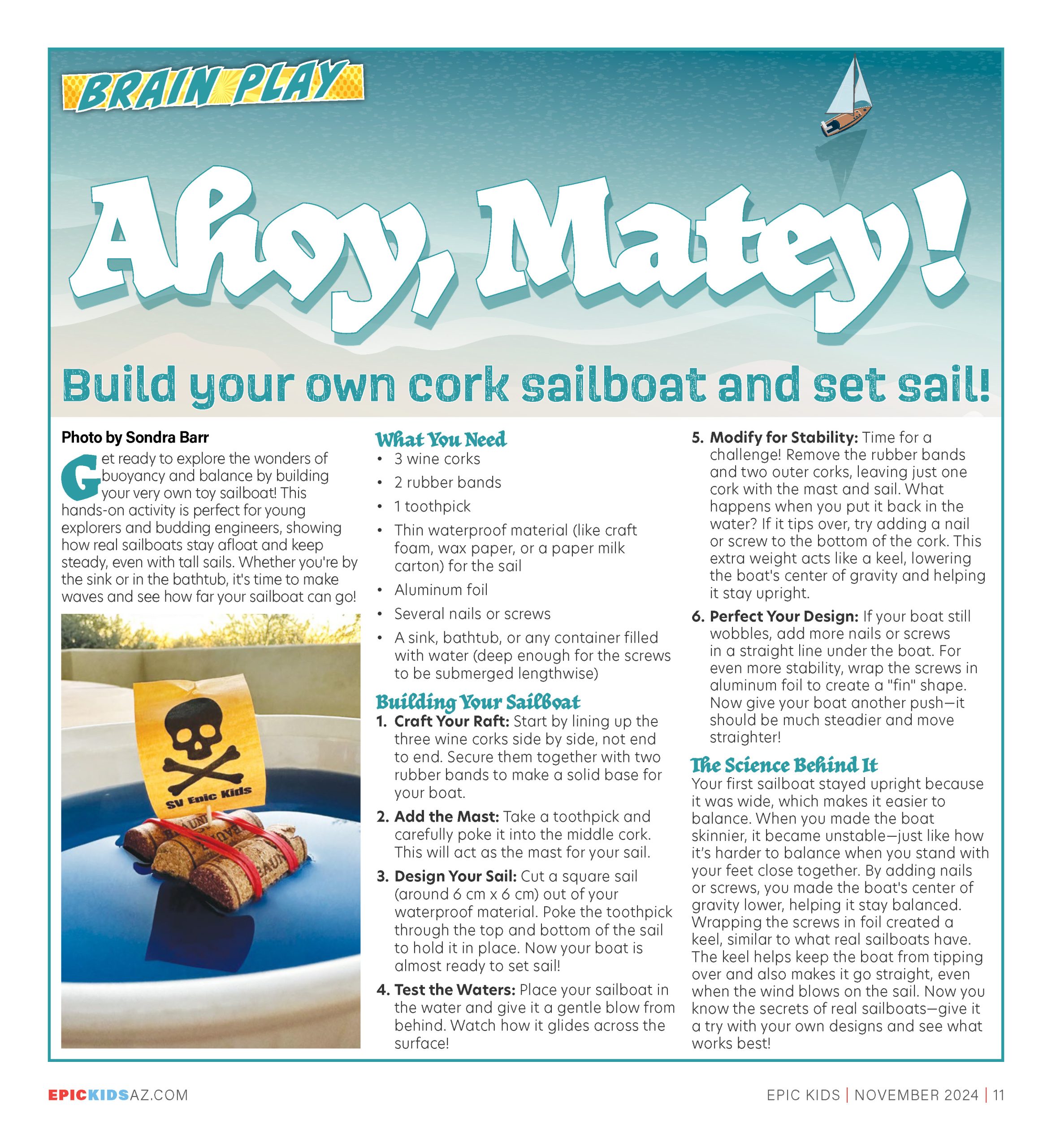Photo by Sondra Barr
Get ready to explore the wonders of buoyancy and balance by building your very own toy sailboat! This hands-on activity is perfect for young explorers and budding engineers, showing how real sailboats stay afloat and keep steady, even with tall sails. Whether you’re by the sink or in the bathtub, it’s time to make waves and see how far your sailboat can go!
WHAT YOU NEED
- 3 wine corks
- 2 rubber bands
- 1 toothpick
- Thin waterproof material (like craft foam, wax paper, or a paper milk carton) for the sail
- Aluminum foil
- Several nails or screws
- A sink, bathtub, or any container filled with water (deep enough for the screws to be submerged lengthwise)
BUILDING YOUR SAILBOAT
- Craft Your Raft: Start by lining up the three wine corks side by side, not end to end. Secure them together with two rubber bands to make a solid base for your boat.
- Add the Mast: Take a toothpick and carefully poke it into the middle cork. This will act as the mast for your sail.
- Design Your Sail: Cut a square sail (around 6 cm x 6 cm) out of your waterproof material. Poke the toothpick through the top and bottom of the sail to hold it in place. Now your boat is almost ready to set sail!
- Test the Waters: Place your sailboat in the water and give it a gentle blow from behind. Watch how it glides across the surface!
- Modify for Stability: Time for a challenge! Remove the rubber bands and two outer corks, leaving just one cork with the mast and sail. What happens when you put it back in the water? If it tips over, try adding a nail or screw to the bottom of the cork. This extra weight acts like a keel, lowering the boat’s center of gravity and helping it stay upright.
- Perfect Your Design: If your boat still wobbles, add more nails or screws in a straight line under the boat. For even more stability, wrap the screws in aluminum foil to create a “fin” shape. Now give your boat another push—it should be much steadier and move straighter!
THE SCIENCE BEHIND IT
Your first sailboat stayed upright because it was wide, which makes it easier to balance. When you made the boat skinnier, it became unstable—just like how it’s harder to balance when you stand with your feet close together. By adding nails or screws, you made the boat’s center of gravity lower, helping it stay balanced. Wrapping the screws in foil created a keel, similar to what real sailboats have. The keel helps keep the boat from tipping over and also makes it go straight, even when the wind blows on the sail. Now you know the secrets of real sailboats—give it a try with your own designs and see what works best!





